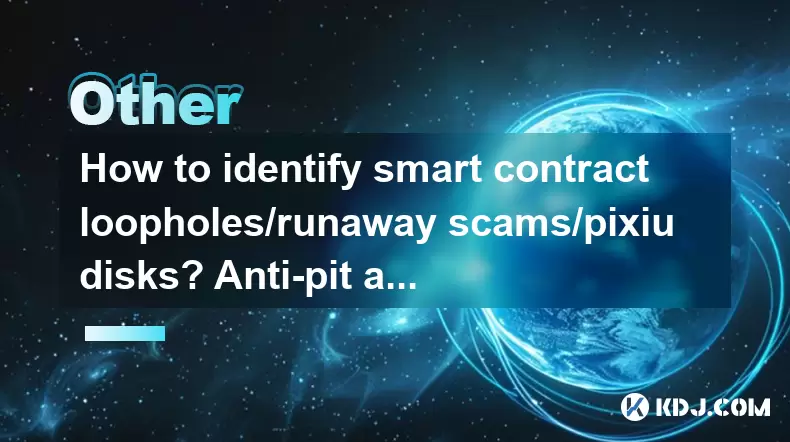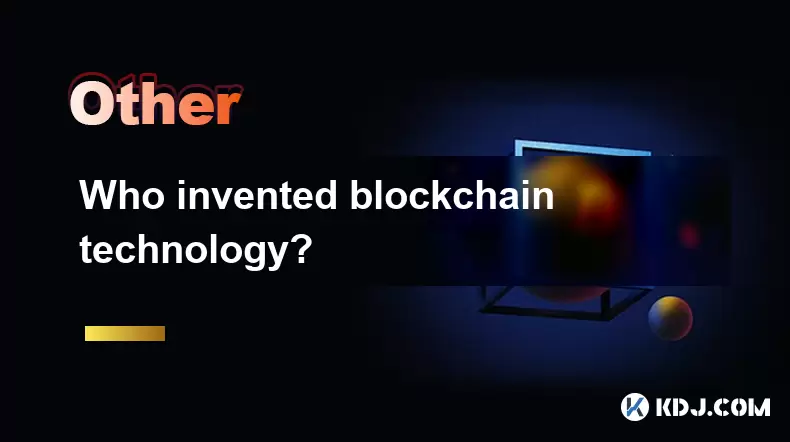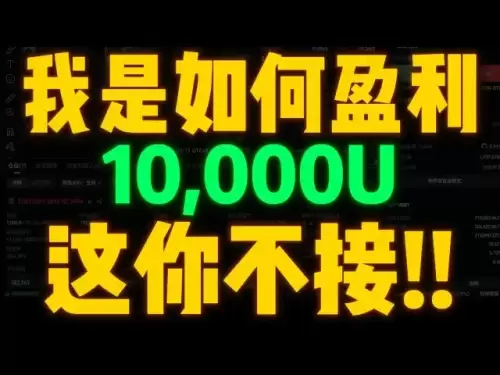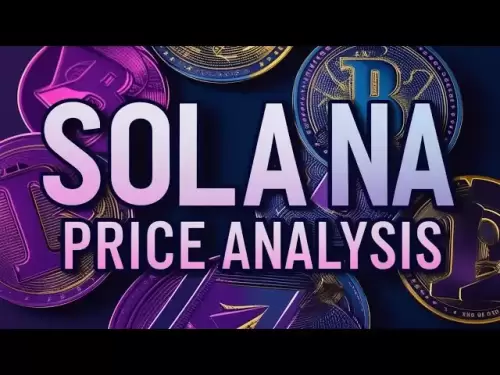-
 Bitcoin
Bitcoin $118300
-0.58% -
 Ethereum
Ethereum $3825
0.11% -
 XRP
XRP $3.137
-0.71% -
 Tether USDt
Tether USDt $0.9999
-0.01% -
 BNB
BNB $803.9
-3.37% -
 Solana
Solana $181.5
-1.94% -
 USDC
USDC $0.9999
0.01% -
 Dogecoin
Dogecoin $0.2238
-2.51% -
 TRON
TRON $0.3358
2.12% -
 Cardano
Cardano $0.7844
-2.16% -
 Hyperliquid
Hyperliquid $43.31
-1.48% -
 Sui
Sui $3.807
-4.04% -
 Stellar
Stellar $0.4203
-1.96% -
 Chainlink
Chainlink $17.79
-3.00% -
 Bitcoin Cash
Bitcoin Cash $567.8
-1.34% -
 Hedera
Hedera $0.2614
-4.30% -
 Avalanche
Avalanche $24.19
-4.46% -
 Litecoin
Litecoin $109.2
-0.74% -
 UNUS SED LEO
UNUS SED LEO $8.969
-0.01% -
 Toncoin
Toncoin $3.404
3.97% -
 Ethena USDe
Ethena USDe $1.001
-0.01% -
 Shiba Inu
Shiba Inu $0.00001307
-3.19% -
 Uniswap
Uniswap $10.33
-1.23% -
 Polkadot
Polkadot $3.884
-4.06% -
 Monero
Monero $312.9
-1.87% -
 Dai
Dai $1.000
0.01% -
 Bitget Token
Bitget Token $4.537
-2.24% -
 Pepe
Pepe $0.00001156
-3.40% -
 Cronos
Cronos $0.1437
-0.89% -
 Aave
Aave $282.8
-2.77%
How to identify smart contract loopholes/runaway scams/pixiu disks? Anti-pit and lightning avoidance guide
Smart contract loopholes, runaway scams, and pixiu disks pose significant risks in crypto; thorough audits and due diligence are essential to avoid financial losses.
Jun 02, 2025 at 07:00 am

In the world of cryptocurrencies, the allure of quick gains often comes with significant risks. Among these risks are smart contract loopholes, runaway scams, and pixiu disks, which can lead to substantial financial losses. This guide aims to equip you with the knowledge to identify these pitfalls and protect yourself from falling victim to them.
Understanding Smart Contract Loopholes
Smart contracts are self-executing contracts with the terms directly written into code. While they offer transparency and automation, they are not immune to errors or malicious intent. Smart contract loopholes are vulnerabilities in the code that can be exploited to manipulate the contract's intended behavior.
To identify smart contract loopholes, it's crucial to conduct a thorough audit of the contract's code. Here are some steps to follow:
- Review the Code: Access the smart contract's code on platforms like Etherscan or BscScan. Look for any unusual or overly complex functions that might hide vulnerabilities.
- Audit Reports: Check if the smart contract has undergone an audit by reputable firms. Audit reports can highlight potential issues and provide recommendations for improvement.
- Community Feedback: Engage with the project's community on forums like Reddit or Telegram. Users often share their experiences and can alert others to potential issues.
- Testing: Use tools like Remix or Truffle to test the smart contract in a safe environment. Simulate different scenarios to see how the contract behaves under various conditions.
Spotting Runaway Scams
Runaway scams are fraudulent schemes where the perpetrators collect funds and then disappear without delivering the promised returns. These scams can be particularly damaging due to their deceptive nature.
To identify a potential runaway scam, look out for the following red flags:
- Promises of Unrealistic Returns: Be skeptical of any project promising high returns with little to no risk. If it sounds too good to be true, it probably is.
- Lack of Transparency: Scammers often avoid providing detailed information about their project's team, roadmap, or financials. A legitimate project should be transparent about its operations.
- Pressure to Invest Quickly: Scammers create a sense of urgency to pressure you into investing without proper due diligence. Take your time to research before committing any funds.
- Anonymous Team: A project with an anonymous team or unverifiable identities is a significant red flag. Legitimate projects usually have a verifiable team with a track record in the industry.
Identifying Pixiu Disks
Pixiu disks are a type of cryptocurrency scam where the perpetrator promises to multiply your investment through a seemingly legitimate platform. The scammer then disappears with the funds, leaving investors with worthless tokens.
To identify a pixiu disk, consider the following:
- Unregulated Platforms: Be cautious of platforms that are not regulated or recognized by financial authorities. Legitimate platforms usually have licenses and are subject to regulatory oversight.
- Lack of Withdrawal Options: Scammers often restrict withdrawal options or impose high fees to discourage investors from cashing out their funds.
- Fake Testimonials: Scammers may use fake testimonials or manipulated data to lure investors. Verify testimonials by checking the authenticity of the sources.
- Unusual Payment Methods: Be wary of platforms that only accept payments through untraceable methods like certain cryptocurrencies or gift cards.
Conducting Due Diligence
Due diligence is essential in identifying and avoiding smart contract loopholes, runaway scams, and pixiu disks. Here are some steps to conduct thorough due diligence:
- Research the Project: Start by researching the project's whitepaper, website, and social media presence. Look for inconsistencies or missing information.
- Check the Team: Verify the team members' identities and their track record in the industry. Use LinkedIn or other professional networks to confirm their credentials.
- Analyze the Tokenomics: Understand the project's tokenomics, including the total supply, distribution, and any mechanisms for burning or minting tokens.
- Evaluate the Community: A strong and engaged community is often a sign of a legitimate project. Look for active discussions and positive feedback from users.
- Monitor the Market: Keep an eye on the project's market performance and any news or developments that could impact its value.
Using Tools for Enhanced Security
Various tools and resources can help you enhance your security and identify potential scams. Here are some to consider:
- Blockchain Explorers: Use blockchain explorers like Etherscan or BscScan to track transactions and verify the authenticity of smart contracts.
- Security Audits: Platforms like CertiK and Quantstamp offer security audits that can help identify vulnerabilities in smart contracts.
- Scam Alerts: Websites like CoinGecko and CoinMarketCap often provide scam alerts and warnings about suspicious projects.
- Wallet Security: Use reputable cryptocurrency wallets with strong security features, such as hardware wallets or wallets with multi-signature requirements.
Case Studies: Learning from Past Scams
Examining past scams can provide valuable insights into how they operate and how to avoid them. Here are a few notable case studies:
- The DAO Hack: In 2016, a hacker exploited a vulnerability in The DAO's smart contract, draining millions of dollars in Ether. This incident highlighted the importance of thorough code audits and the potential risks of smart contract vulnerabilities.
- Bitconnect: Bitconnect was a Ponzi scheme that promised high returns through a "lending program." It collapsed in 2018, leaving investors with significant losses. This case underscores the dangers of promises of unrealistic returns and the importance of transparency.
- OneCoin: OneCoin was a cryptocurrency scam that operated as a multi-level marketing scheme. It promised investors high returns but was ultimately revealed to be a fraudulent operation. This case illustrates the risks of investing in projects with opaque operations and unverifiable teams.
Protecting Yourself: Best Practices
To protect yourself from smart contract loopholes, runaway scams, and pixiu disks, follow these best practices:
- Diversify Your Investments: Avoid putting all your funds into a single project. Diversification can help mitigate the risk of falling victim to a scam.
- Stay Informed: Keep up-to-date with the latest news and developments in the cryptocurrency space. Awareness of current trends and scams can help you make informed decisions.
- Use Strong Security Measures: Implement strong security measures, such as two-factor authentication and hardware wallets, to protect your funds.
- Be Skeptical: Approach every investment opportunity with a healthy dose of skepticism. Question the project's claims and verify the information provided.
Frequently Asked Questions
Q: Can smart contract audits completely eliminate the risk of loopholes?
A: While smart contract audits significantly reduce the risk of loopholes, they cannot guarantee complete elimination of all vulnerabilities. It's essential to combine audits with other due diligence measures.
Q: How can I verify the authenticity of a project's team?
A: You can verify the authenticity of a project's team by checking their LinkedIn profiles, looking for interviews or articles featuring them, and engaging with the community to see if others have interacted with them.
Q: What should I do if I suspect a project is a scam?
A: If you suspect a project is a scam, stop investing immediately and report your concerns to the platform where the project is listed. Additionally, warn others in the community and consider reporting the scam to regulatory authorities.
Q: Are all projects with high promised returns scams?
A: Not all projects with high promised returns are scams, but they should be approached with caution. High returns often come with high risks, and it's crucial to thoroughly research the project before investing.
Disclaimer:info@kdj.com
The information provided is not trading advice. kdj.com does not assume any responsibility for any investments made based on the information provided in this article. Cryptocurrencies are highly volatile and it is highly recommended that you invest with caution after thorough research!
If you believe that the content used on this website infringes your copyright, please contact us immediately (info@kdj.com) and we will delete it promptly.
- Dalio's Take: Balancing Bitcoin, Gold, and the Debt Doom Loop
- 2025-07-31 00:51:15
- Ethereum's Epic Rally: A Decade of Decentralization and a Celebration in NFTs
- 2025-07-31 01:11:05
- XRP Price, Altcoins, and the 50x Potential: What's the Buzz?
- 2025-07-31 01:15:14
- BlockchainFX ($BFX): Is This Altcoin the Best Crypto Presale of 2025?
- 2025-07-31 01:21:27
- PENGU Price Plunge? Binance Transfers and Token Transfer Trends
- 2025-07-30 23:10:15
- Navigating Crypto Investment: Bitcoin Mining and the Rise of Cloud Mining in the Big Apple
- 2025-07-30 22:31:15
Related knowledge

How to start a business using blockchain?
Jul 28,2025 at 12:36am
Understanding the Basics of Blockchain TechnologyBefore diving into the process of starting a business using blockchain, it's crucial to understand wh...

What is a token on the blockchain?
Jul 21,2025 at 07:00am
Understanding the Concept of a TokenIn the realm of blockchain technology, a token is a digital representation of an asset or utility that exists on a...

Can blockchain be used for identity verification?
Jul 18,2025 at 02:14pm
Understanding Identity Verification in the Digital AgeIn the modern digital landscape, identity verification has become a critical component for ensur...

What is a consensus mechanism in blockchain?
Jul 21,2025 at 03:01am
Understanding the Basics of Consensus MechanismsA consensus mechanism is a critical component of any blockchain network. It refers to the process by w...

How to explain blockchain to someone with no tech background?
Jul 18,2025 at 11:08pm
Understanding the Basics of BlockchainTo explain blockchain to someone with no tech background, it's essential to start with simple analogies and avoi...

Who invented blockchain technology?
Jul 23,2025 at 01:28am
Origins of Blockchain TechnologyBlockchain technology did not emerge from a single inventor or institution. Instead, it evolved through a series of ac...

How to start a business using blockchain?
Jul 28,2025 at 12:36am
Understanding the Basics of Blockchain TechnologyBefore diving into the process of starting a business using blockchain, it's crucial to understand wh...

What is a token on the blockchain?
Jul 21,2025 at 07:00am
Understanding the Concept of a TokenIn the realm of blockchain technology, a token is a digital representation of an asset or utility that exists on a...

Can blockchain be used for identity verification?
Jul 18,2025 at 02:14pm
Understanding Identity Verification in the Digital AgeIn the modern digital landscape, identity verification has become a critical component for ensur...

What is a consensus mechanism in blockchain?
Jul 21,2025 at 03:01am
Understanding the Basics of Consensus MechanismsA consensus mechanism is a critical component of any blockchain network. It refers to the process by w...

How to explain blockchain to someone with no tech background?
Jul 18,2025 at 11:08pm
Understanding the Basics of BlockchainTo explain blockchain to someone with no tech background, it's essential to start with simple analogies and avoi...

Who invented blockchain technology?
Jul 23,2025 at 01:28am
Origins of Blockchain TechnologyBlockchain technology did not emerge from a single inventor or institution. Instead, it evolved through a series of ac...
See all articles

























































































